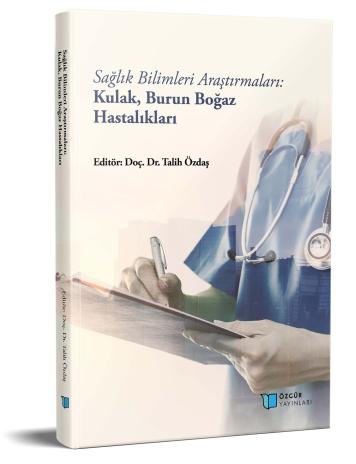
Nasal Embryology, Nasal Histology, Nasal Physiology
Chapter from the book:
Özdaş,
T.
(ed.)
2023.
Ear Nose Throat Diseases Review.
Synopsis
NASAL EMBRYOLOGY
On the twenty-fourth day of pregnancy, two lateral nasal prominences of ectoderm origin and a frontonasal prominence of mesoderm origin occur in the midface region. From the nasal prominences, the nasal cavity, nasal mucosa, and primitive choana are formed. The septum arises from the frontonasal prominence. In the ongoing process, intussusception develops in the nasal prominences and forms the nasal recesses. The oral cavity and nasopharyngeal recesses are divided into two by a membrane called the bucconasal membrane. The posterior part of this membrane disappears at the end of the seventh week and forms the choanae. During birth, the nasal septum, premaxilla, and vomer are mostly composed of cartilage. Two ossification centers form in the nasal septum. These ossification centers unite posteriorly, forming the vomer in two layers.
NASAL HISTOLOGY
The nasal cavity epithelium has a different specialized structure in each part of the nose. The anterior part of the nasal cavity is lined by stratified squamous epithelium with hair follicles, sebaceous and sweat glands.
The lamina propria layer of this epithelium contains numerous seromucous glands and is adherent to the periosteum and perichondrium submucosa underneath.
NASAL PHYSIOLOGY
The nose has the most important place in the upper respiratory tract. During respiration, the airflow reaches the lower respiratory tract by advancing to the nostril, nasal vestibule, internal nasal valve, nasal cavity, choana, and nasopharynx, respectively. The temperature of the outdoor air varies between –50° and +50°C depending on the region. The nasal structure is specialized to bring this air between 31-37 ° C.
Cleaning of breathing air occurs in two ways. In the first stage, respiration is less than 3 μm.
larger particles are filtered by nasal vestibule hairs and internal nasal valve.
The resistance of nasal airflow varies in physiological and pathological conditions. Physiologically, the cyclic change in nasal airway resistance is called the nasal cycle.
The nose has no effect on resonance when chanting or changing vowels.
However, during the removal of some consonants, the nose serves as an additional resonance zone.

